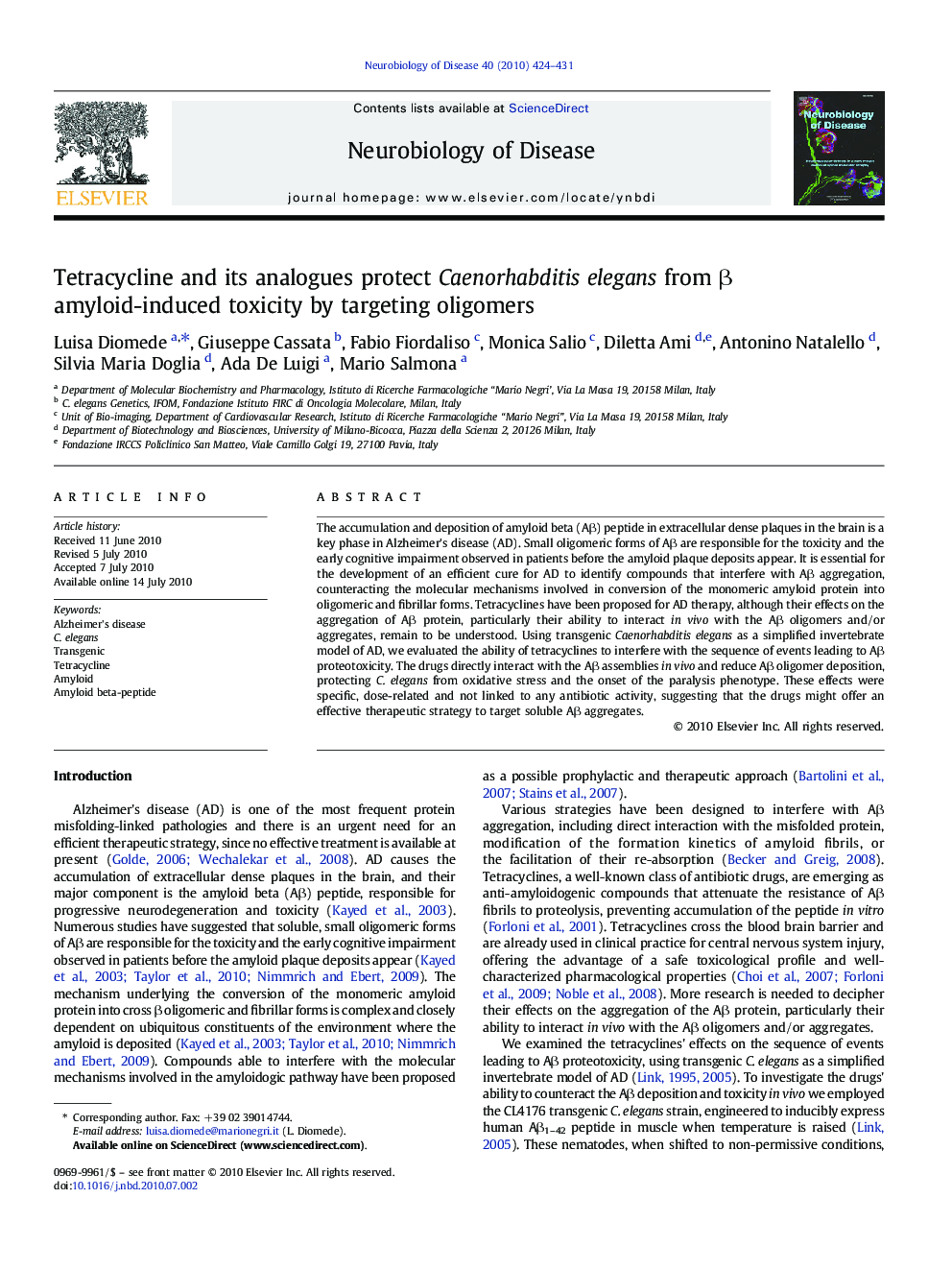| Article ID | Journal | Published Year | Pages | File Type |
|---|---|---|---|---|
| 3069777 | Neurobiology of Disease | 2010 | 8 Pages |
The accumulation and deposition of amyloid beta (Aβ) peptide in extracellular dense plaques in the brain is a key phase in Alzheimer's disease (AD). Small oligomeric forms of Aβ are responsible for the toxicity and the early cognitive impairment observed in patients before the amyloid plaque deposits appear. It is essential for the development of an efficient cure for AD to identify compounds that interfere with Aβ aggregation, counteracting the molecular mechanisms involved in conversion of the monomeric amyloid protein into oligomeric and fibrillar forms. Tetracyclines have been proposed for AD therapy, although their effects on the aggregation of Aβ protein, particularly their ability to interact in vivo with the Aβ oligomers and/or aggregates, remain to be understood. Using transgenic Caenorhabditis elegans as a simplified invertebrate model of AD, we evaluated the ability of tetracyclines to interfere with the sequence of events leading to Aβ proteotoxicity. The drugs directly interact with the Aβ assemblies in vivo and reduce Aβ oligomer deposition, protecting C. elegans from oxidative stress and the onset of the paralysis phenotype. These effects were specific, dose-related and not linked to any antibiotic activity, suggesting that the drugs might offer an effective therapeutic strategy to target soluble Aβ aggregates.
Research Highlights►Transgenic Caenorhabditis elegans was used as a simplified invertebrate model of AD. ►Tetracyclines interfered with the sequence of events leading to Aβ proteotoxicity. ►Tetracyclines interacted with the Aβ assemblies and reduced Aβ oligomer deposition. ►Tetracyclines protected C. elegans from oxidative stress and the paralysis phenotype. ►The effects were specific dose-related and not linked to any antibiotic activity.
